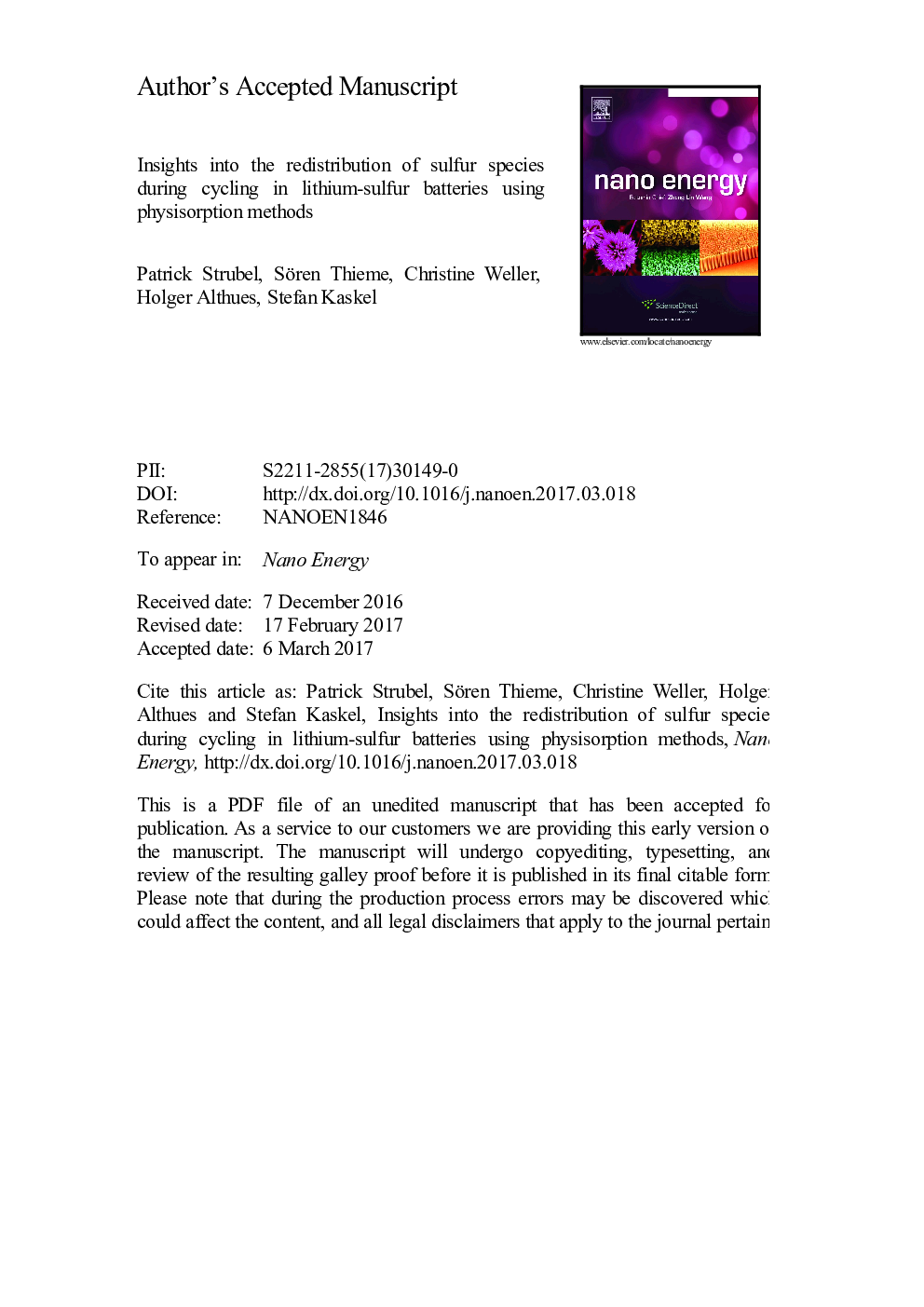| Article ID | Journal | Published Year | Pages | File Type |
|---|---|---|---|---|
| 5451960 | Nano Energy | 2017 | 16 Pages |
Abstract
Nitrogen physisorption was used to analyze textural transformations in lithium-sulfur cathodes during cycling for two alternate electrolyte systems. Significant impact of the electrolyte type on the accessible cathode porosity in the charged vs. discharged state was detected, providing important insights in the cells conversion mechanism and the role of polysulfide solubility. The main advantage of the method lies in the resolution of pore accessibility and size distributions. Thus, depending on the state of charge (SoC), the C-rate used for cycling as well as electrolyte properties (i.e. polysulfide solvation), significant differences in the redistribution of active sulfur species as well as pore blocking effects can be identified. This methodology might facilitate interpretation and further optimization to achieve long-term stable lithium-sulfur batteries.
Related Topics
Physical Sciences and Engineering
Energy
Energy (General)
Authors
Patrick Strubel, Sören Thieme, Christine Weller, Holger Althues, Stefan Kaskel,
